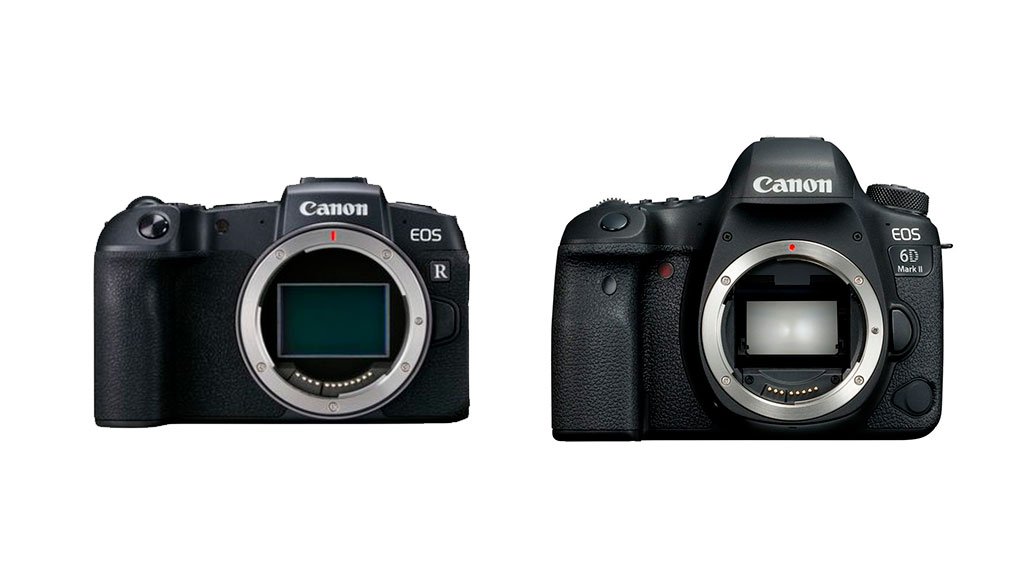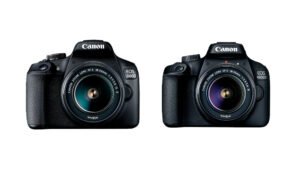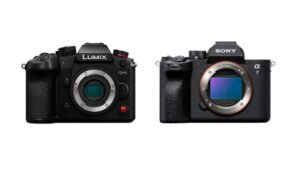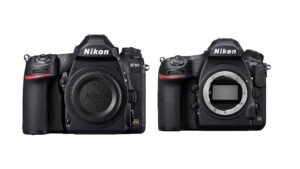The Canon 6D II is a camera that does not reach the professional level, as it is oriented to an audience looking for the cheapest at a high level, despite this it gives very good results, its robustness for the most demanding scenarios and its vari-angle LCD touch screen helps to make those Live View frames easier.
The RP Canon belongs to those early Canon evil cameras that are worth trying for a change of format. It is aimed at amateurs, although it can be used to great advantage with the variety of EF and EF-S lenses and its Full Frame sensor of 26.2 mpx.
Canon RP vs Canon 6D mark II specifications
As always we are going to compare, the Canon RP against its fiercest competitor, in this case the camera that can stand up to it would be the Canon 6D II and now we will see how they differ.
CANON RP | CANON 6D II | |
SENSOR | 35.9 x 24 mm CMOS and full frame 26.2 mpx | 35.9 x 24 mm CMOS with 26.2 mpx resolution |
PROCESSOR | DIGIC 8 | DIGIC 7 |
FOCUS (AF) | Dual Pixel CMOS AF | 45 Points |
VIEWER | OLED electronic (0.39″) of 2.36 mpx and 100% coverage | Optical viewfinder 98% coverage 21 mm eye distances |
DISPLAY | LCD Clear View II (7.5 cm), approx. 1.04 mpx, touch, variable angle (170º vertical and horizontal) | LCD Clear View II (3.0″), approx. 1,040,000 px, tactile and with variable angle |
ISO | 100 a 40000 | 100 a 40000 |
SHOTS PER SECOND | 5 fps | 6.5 fps |
MAXIMUM RAPIDITY | 50 RAW | |
VIDEO RESOLUTION | 4K at 25 fps
| Full HD at 60 fps |
CONNECTIVITY | WiFi, Bluetooth | WiFi, NFC, Bluetooth and GPS |
BATTERY | LP-E17. Approx. 250 shots
| Lithium Ion LP-E6N. Approx. 1200 shots
|
MONTURA | RF (EF and EF -S with adapter) | EF mount |
WEIGHT | 485 g | 765 g |
Sensor
Both cameras have a 26.2 MPX Full Trame CMOS sensor. Portrait photographers will be delighted with the shallow depth of field offered by the full-frame sensor of these cameras and their ability to capture momentary expressions thanks to their 6.5 frames per second speed. When shooting landscapes, these cameras will capture images full of detail for photos that have realistic depth and clarity.
Body
The Canon 6D IIIt is a camera that keeps the Canon style, having a very rigid construction as well as a very good ergonomics. It contains a folding screen, is robust and resistant. The Canon RP stands out for its small size and light weight, more comfortable to carry, almost like a compact camera.
Approach
The Canon 6D II has a 45-point focus. Focusing in difficult low-light conditions has also improved thanks to the much wider ISO range of this sensor. Another important improvement for the photographer looking for a good focus response lies in the number of frames per second that his equipment can perform, in this case we go from having 4.5 frames per second to 6.5, which is a significant improvement and that takes us into action or sports photography. On the other hand, The Canon RP provides an expanded AF area, as well as an incredibly fast AF speed of only 0.05 s, over 4779 selectable AF positions and low-light autofocusing down to -5 EV3. Its Eye AF function ensures sharp portraits with maximum depth of field throughout the frame.
Battery
The battery of the Canon RP is rated at only 250 shots, which is a large margin of difference to other cameras, such as the Canon 6D IIwhich holds up to 1200.
Video
The Canon 6D II is only capable of recording in Full HD at 60p, which is not enough for those of us who see 4k as a standard in audiovisual recording. However, if we only need to record in Full HD, the camera has some interesting tools such as the folding screen that will help us to record ourselves or to have more flexibility when recording our shots. This is enhanced by the Canon RP which records stable video with digital video IS and resolution up to 4K.
Opinion
With the Canon 6D II In terms of video we do not have great features as we do not make the leap to 4K, but otherwise we get a camera for those photography lovers who want to go a step further. Likewise, the Canon RP is a very good camera, it has a new folding screen, better resolution in video recording although the amount of pictures we can take per second is a little higher in the previous one. Both will be a good choice for those who have photography as a hobby.







